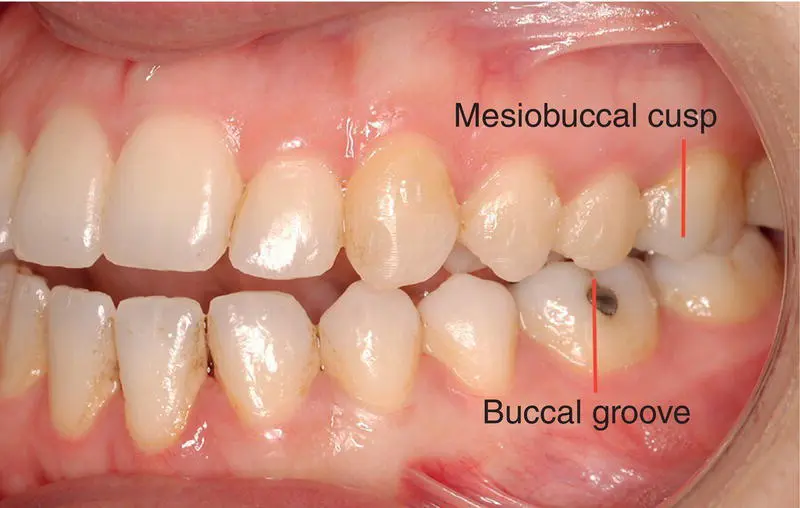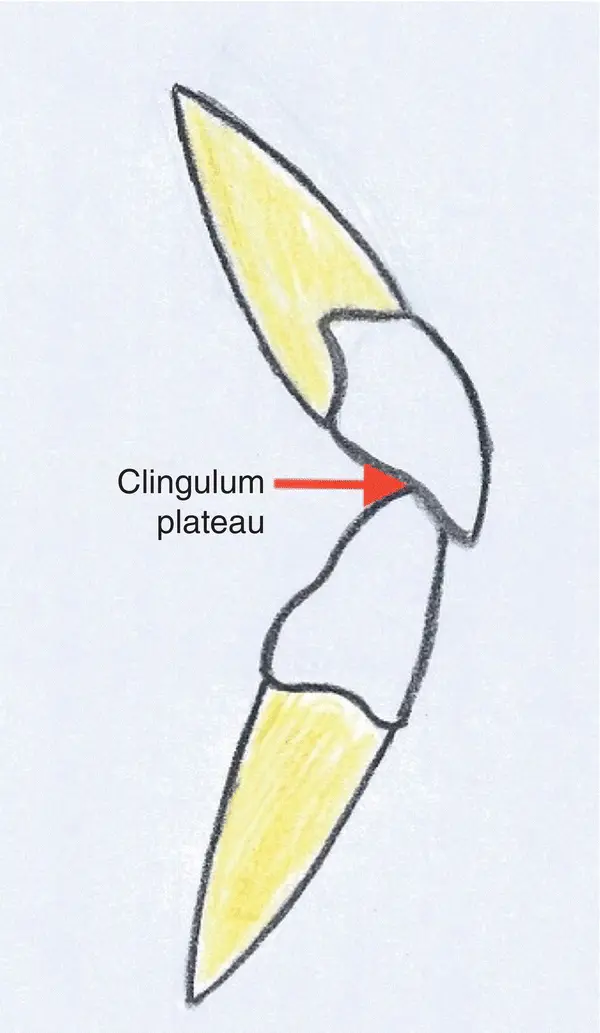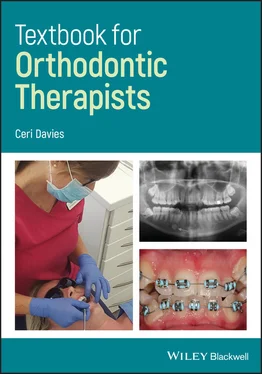This assesses how the patient bites the teeth together.
When assessing the bite we look at:Is there any deviation of the mandible on closing?Does it shift left, right, or forward to gain a comfortable bite?
2.3.7 Teeth Present/Missing
This will look at how many teeth there are.
Patients can present with missing teeth or extra teeth.
Missing teeth could be for numerous reasons:Hypodontia casesPrevious extractionsImpacted teeth.
Extra teeth could be due to supernumerary teeth such as:Conical teeth, also known as mesiodensTuberculatesSupplemental teethOdontomes.
This stages assesses if the patient has any habits that may affect the teeth, such as thumb sucking or a tongue thrust.
It is important to establish whether the patient has a relevant habit or not prior to treatment starting.
All habits must be ceased before orthodontic treatment can be commenced, as continuing could increase the length of treatment and, more importantly, result in relapse at the end of treatment.
2.3.9 PPP – Presence, Position, Pathology
Presence looks at what teeth are present in the mouth.
Position looks at the position of the teeth, such as impacted teeth, rotated teeth, or palatally/buccally displaced teeth.
Pathology looks at the health of the teeth, for instance any caries that could be present which would necessitate fillings. This area can also highlight any dental health problems, for example any recession, erosion, gum disease, or even gingivitis that a patient may have; it is important to identify this prior to treatment to make sure it is fully under control. Any more underlying problems found around the apical area of a tooth can be identified by the use of appropriate radiographs.
2.3.10 SSC – Size, Shape, Colour
This stage looks at the size, shape, and colour of all teeth, for example:Microdontia: small teethMacrodontia: big teethPeg lateralsTrauma to teeth resulting in nerve death and causing discoloration of the teeth.
2.3.11 Temporal Mandibular Joint
This stage assesses the jaw.
Does the patient have any problems with the temporal mandibular joint on opening and closing?
Has the patient reported any symptoms?
Do they experience any clicking or pain?
3 Classification of Malocclusion
Classification of malocclusion looks at the position of the teeth when the patient is in occlusion. These classifications look at the relationship of how the molars, incisors, and canines meet.
They are categorized into three groups:
Angle’s classification
British Standards Institute classification
Canine relationship.
3.1 Angle’s Classification
Developed by Edward Angle in 1899, this type of classification looks at the antero‐posterior position of the first permanent molars, known as the molar relationship.
Class I: the mesiobuccal cusp of the upper first molar occludes in the buccal groove of the lower first molar ( Figure 3.1).
Class II: the mesiobuccal cusp of the upper first molar occludes anterior to the buccal groove of the lower first molar ( Figure 3.2).
Class III: the mesiobuccal cusp of the upper first molar occludes posterior to the buccal groove of the lower first molar ( Figure 3.3).
Class II25: the mesiobuccal cusp of the upper first molar occludes one‐quarter anterior to the buccal groove of the lower first molar.
Class II50: the mesiobuccal cusp of the upper first molar occludes half a unit anterior to the buccal groove of the lower first molar (cusp to cusp with the lower first molar).
Class II75: the mesiobuccal cusp of the upper first molar occludes three‐quarters anterior to the buccal groove of the lower first molar (not a full unit class II).
Class III25: the mesiobuccal cusp of the upper first molar occludes one‐quarter posterior to the buccal groove of the lower first molar.
Class III50: the mesiobuccal cusp of the upper first molar occludes half a unit posterior to the buccal groove of the lower first molar (cusp to cusp with the lower second molar).
Class III75: the mesiobuccal cusp of the upper first molar occludes three‐quarters posterior to the buccal groove of the lower first molar (not a full unit class III).

Figure 3.1 Class I molar relationship.

Figure 3.2 Class II molar relationship.

Figure 3.3 Class III molar relationship.
3.2 British Standards Institute Classification
This type of classification looks at the incisor relationship.
Class I: the lower incisor edges occlude with or lie immediately below the cingulum plateau of the upper central incisors ( Figure 3.4).
Class II div I: the lower incisor edges occlude posterior to the cingulum plateau of the upper central incisors. The upper central incisors are proclined and there is an increase in the overjet ( Figure 3.5).
Class II div II: the lower incisors edges occlude posterior to the cingulum plateau of the upper central incisors. The upper central incisors are retroclined and there is a reduced or increased overjet ( Figure 3.6). A common feature is proclined lateral incisors.
Class III: the lower incisor edges occlude anterior to the cingulum plateau of the upper central incisors. The overjet is reduced or reversed ( Figure 3.7).

Figure 3.4 Incisor relationship class I.
This classification looks at the position of the canine.
Class I: the upper canine occludes and lies in the embrasure between the lower canine and first premolar ( Figure 3.8).
Class II: the upper canine occludes anteriorly and lies in the embrasure between the lower lateral incisors and the canine ( Figure 3.9).
Class III: the upper canine occludes posteriorly and lies in the embrasure between the lower first and second premolars ( Figure 3.10).
Class II25: the upper canine occludes one‐quarter anteriorly from being in embrasure between the lower lateral incisors and the canine.
Class II50: the upper canine occludes half a unit anteriorly and lies directly over the lower canine (cusp to cusp with the lower canine).
Class II75: the upper canine occludes three‐quarters anteriorly from being in embrasure between the lower lateral incisors and the canine (not a full unit class II).
Class III25: the upper canine occludes one‐quarter posteriorly from being in embrasure between the lower first and second premolars.
Class III50: the upper canine occludes half a unit posteriorly and lies directly between the lower first and second premolars.
Class III75: the upper canine occludes three‐quarters posteriorly from being in embrasure between the lower first and second premolars (not a full unit class III).
Читать дальше
















